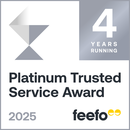We are very fortunate to be based at the stunning site of Lemsford Mill, near Welwyn Garden City, and we are proud to be custodians of a small part of wild Hertfordshire. Peter Oakenfull is part of the team that maintains the Mill grounds and its wildlife. In the first of a series of seasonal posts, he tells us what the site and his work mean to him.
I have worked on the Lemsford Mill grounds as a contractor for Ramble Worldwide since they moved there in 2005. Having grown up in the new town of Welwyn Garden City and played in and fished the River Lea around the mill site as a child, it gives me great pleasure to now have a hand in its management.
I am very fortunate that the Mill brings together two aspects of my professional life, the horticulturalist and the ecologist, as I am part of a team that looks after the grounds for the company, blending its formal gardens with the diverse habitat of the River Lea as it passes through Lemsford.
The tranquil days of bygone years when nearly every river had a water bailiff who managed and cared for it have largely disappeared. Large sections of rivers have become overgrown, with fallen trees and vegetation blocking flow, causing scouring of the bed. Standing trees along the banks are creating too much shade, and all these things are contributing to the disruption of what is a finely balanced ecosystem.
�
Worst of all, the modern era has introduced alien species into the systems, such as the American mink and the signal crayfish, both predators of our native species. Then there are plants like Himalayan balsam, spreading not only along most of our rivers but also encroaching into the landscape of the floodplains, shading out river banks and depleting native flora.
The Mill site is a delightful place to inspire your business vision. RWH may be sending clients too far-off corners of the globe to see wildlife such as polar bears in Norway, kangaroos in Australia and much more, but the native wildlife on the Mill site is equally important to them.
�
Eco-friendliness and sustainability is also high on their agenda, so what better than generating your own electricity by hydropower? By installing a modern water wheel into a wheel pit that can boast a history back to at least the mid-13 th century and probably even back as far as Domesday, they are now self-sufficient in energy generation, and even produce enough to put some back into the national grid.
Sensitive management of the formal lawns and flower borders alongside the diverse and lush vegetation of the leat, mill race and tail race all help to control the depth of water and the flow through the wheel, and they all play their part in attracting the diverse wildlife that is found on the site.
The lawnmowers and hedge cutters may briefly interrupt the peace, but it is temporary, and the ever-present and shy coots and moorhens are now so used to us they hardly ruffle a feather. One of the iconic moments in the wildlife calendar for me is when the swallows return from Africa in spring. Watching them dipping and feeding over the river is a delight, especially knowing that the Mill’s listed outbuildings play their part by doubling up as nest sites for them and the starlings.
One could be forgiven for becoming complacent in the midst of such a plethora of species, but the flash of blue and sweet call of a passing kingfisher or the dancing grey wagtail as it nips from lily pad to lily pad in the leat in search of mayflies will always halt proceedings for a while.
A delightful sight for us during last summer was a water vole in the margins of the mill race. Once common, it is now a species fraught with problems and suffering massive declines throughout Hertfordshire and beyond. It was a special sighting for us, but no sooner were our hopes raised when news came that its main predator, the American mink, was in the vicinity. This non-native species that escaped initially from mink farms now breeds freely in the wild and is being controlled nationally, including here at the Mill site.
The river, its marginal vegetation and adjacent habitats of woodland, scrub, grassland and of course the small orchard which is currently being restored, ensures the diversity of species will continue. The relaxed nature of Ramble Worldwide as a whole and their love of wildlife can be tested though, but even when a visiting badger took a fancy for the tasty crane fly larvae under the lawns three years ago, trashing the lawns overnight, they took it all in their stride. Mind you, we have now erected gates over the bridges after the same thing happened in September – but this is a small price to pay for all this wonderful wildlife!
.jpg?ni=%2Fimages%2Fno-image.png)
.jpg?ni=%2Fimages%2Fno-image.png)
.jpg?ni=%2Fimages%2Fno-image.png)
.jpg?ni=%2Fimages%2Fno-image.png)
.jpg?ni=%2Fimages%2Fno-image.png)
.jpg?ni=%2Fimages%2Fno-image.png)






